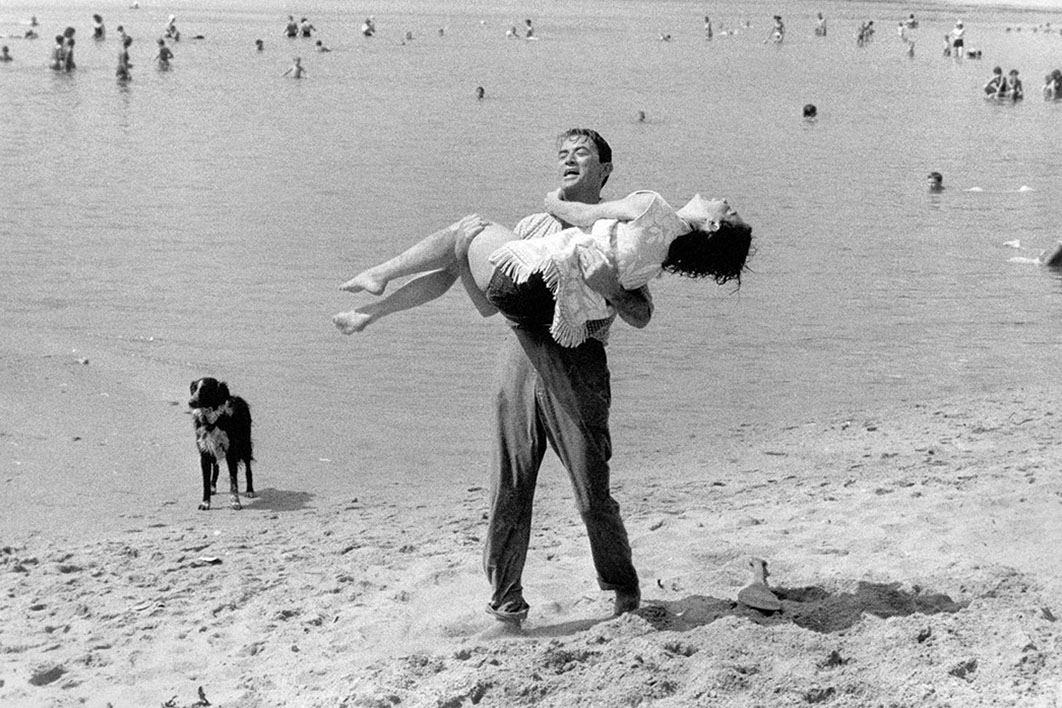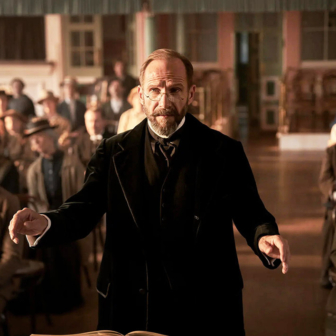We’ve been here before. The empty city streets, the anxiety and fear, the wondering how and when it will all end. The first time, it was a fantasy that seemed all too real. This time, it’s just real.
In late February, I visited Japan for the first time. Covid-19 was on the move, but it still seemed feasible to make this short, long-planned trip. Planes were flying normal schedules; lockdowns hadn’t yet begun. But all that would change with frightening speed, and Japan would soon offer an unlikely link between two scenarios of Australia in momentous conditions, one of them an imagined nuclear war, the other the pandemic we are experiencing now.
No sooner had I arrived than Japan started to close its museums and galleries. Unexpectedly, and disappointingly, I couldn’t visit the Hiroshima Peace Memorial Museum, one of the country’s most historically significant places. But I was free to walk around the nearby A-Bomb Dome, the ruins of a building 600 metres beneath where America detonated the first atomic bomb ever used in warfare.
Dropped from the Enola Gay on 6 August 1945, the bomb killed an estimated 200,000 people with its blast or from burns and radiation poisoning, and obliterated the city of Hiroshima. America dropped a second atomic bomb on Nagasaki three days later, bringing an end to the Pacific war that Japan had started four years earlier when it attacked Pearl Harbor with conventional bombs.
Hiroshima became a symbol for the anti-nuclear movement that emerged during the ensuing cold war. By the time Nevil Shute wrote his novel On the Beach in 1957, there was a sense that the nuclear arms race between the United States and the Soviet Union could become a hot war at any minute.
Shute was a British-born aeronautical engineer and novelist who had worked for the British Admiralty during the second world war. He flew his own plane to Australia in 1948, returning two years later to settle at Langwarrin, near Melbourne. His novels about Australia, including A Town Like Alice, brought him great success, but none matched On the Beach. Capturing the fears hanging over the world of that era, it became an instant global bestseller.
On the Beach is set in 1963, in and around Melbourne, after radioactive fallout from a nuclear war between the two superpowers has obliterated life elsewhere on Earth. An estimated five months remain before the radiation will engulf Australia, too. Stanley Kramer, a Hollywood producer and director, snapped up the rights to Shute’s novel, and filmed it on location in Melbourne in 1959 with some of the biggest Hollywood stars of the day: Gregory Peck, Ava Gardner, Fred Astaire and Anthony Perkins.
When we think of global threats to humanity, nuclear war and pandemics usually top the list. Their impacts, of course, would be different, though no one is sure exactly how different. I had happened to visit Hiroshima in the seventy-fifth anniversary year of the atomic bombing. When I returned to Australia in early March, I was struck by a similar sense of the doom that pervades Shute’s novel and Kramer’s movie, the latter enhanced by the brilliant black-and-white imagery of the Italian cinematographer Giuseppe Rotunno.
Shute’s story is one of despair at how humans have managed the world, and especially their incapacity to heed warnings. “Newspapers,” one of his characters says, suggesting how serious warnings about nuclear war could have gone out. “You could have done something with newspapers. We didn’t do it. No nation did, because we were all too silly. We liked our newspapers with pictures of beach girls and headlines about cases of indecent assault.”
Social media may well play an even worse role in today’s silliness. Serious warnings about a global pandemic were equally overlooked. “If anything kills ten million people over the next few decades, it’s most likely to be a highly infectious virus rather than a war,” the tech billionaire Bill Gates warned five years ago. “We’ve invested a huge amount in nuclear deterrents, but we have actually invested very little in a system to stop an epidemic. We’re not ready for the next epidemic… We need to do simulations. Germ games, not war games.”
Shute would not have imagined it in 1957, but his picture of a world closing down under a nuclear catastrophe uncannily mirrors many of the social curbs and human emotions evoked six decades later by a virus that seemingly has the power to destabilise populations and devastate economies.
Melbourne’s normally bustling landmarks, such as Flinders Street Station and the forecourt at the State Library of Victoria, are almost as devoid of people today as they were at the end of Shute’s story. Australians stranded around the world have been rushing to fly back to the security of their home soil, even if it has suddenly become very insecure. Americans in On the Beach wanted to do the same thing.
In Kramer’s film, one of the most chilling yet poignant scenes involves a reconnaissance trip from Melbourne by the nuclear-powered submarine the USS Scorpion, the last surviving vessel in the American navy, to investigate a strange radar signal from the American west coast. When it reaches San Francisco Bay one of its American crew, Ralph Swain (played with a masterly American accent by the Australian actor John Meillon), jumps ship and swims to the shore of his home city, where life has ceased to exist. Ignoring a loudhailer order to return from the sub’s commander, Dwight Towers (Gregory Peck), he calls back, “I have a date on Market Street, Captain. I’m going home.”
Then, as now, the fear of a force that can change lives forever, or end them, prevails. “I’m afraid,” Moira Davidson, Ava Gardner’s character in Shute’s story, tells her old flame, the scientist Julian Osborn (Fred Astaire). “I have nobody.” On 2 April Anthony Albanese, the Labor leader, told ABC radio in Melbourne that he had walked along a queue stretching about 200 metres from the Centrelink office in his Sydney electorate, talking to people who had lost livelihoods. “Everyone is polite,” he said. “That is the nature of our community. But many of them are distraught, they’re distressed.”
In his account of Australia’s political functioning in a cold war cataclysm, Shute also presaged what is happening now. “With no aircraft flying on the airlines,” he wrote, “federal government from Canberra was growing difficult, and parliamentary sessions there were growing shorter and less frequent.”
In fact, they have now stopped. Parliament has been suspended until August, although Scott Morrison suggests it might come back for a “trial week sometime in May.” For the first time in its history, Canberra airport was closed for two days in April in the absence of scheduled flights. On 21 April, just three arrivals and three departures were scheduled.
Japan, too, portends how Australia will be isolated from the wider world. During my visit, the country had seemed to prepare for Covid-19 more seriously than Australia had. Everyone, everywhere, wore face masks, trains and buses bore special electronic signs warning against infection, hotels and restaurants insisted on visitors using hand sanitiser before entering. Japanese norms of complying with official directions had helped to keep infection rates relatively low.
By late March, even with five times Australia’s population, it had fewer cases of Covid-19 than Australia. More than 10,000 cases later, it has one-and-a-half times Australia’s number, according to the World Health Organization. Under criticism for not imposing stronger social restrictions earlier, prime minister Shinzo Abe finally declared a national state of emergency on 16 April.
Japan’s popularity as a destination for Australians had been growing, with 600,000 Australians visiting last year. Four airlines had direct flights from Japan to six Australian cities. By early April, flights had diminished to just three a week, all of them to Sydney by one airline, ANA. Richard Court, Australia’s ambassador to Japan, wrote to Australians in Japan recently warning of uncertainty about whether any flights at all to Australia would continue after 24 April.
Despite how it may have seemed, Australians are not facing the end of the world, as they were in Nevil Shute’s novel. Nevertheless, as governments splurge money, increase controls over the lives of people and businesses, and watch gingerly how global power will shape up after the emergency, many realise that the world will never be quite the same again.
There is one other difference between the Australia of Shute’s catastrophe and the current one. Far from observing social isolation back then, Australians coped with the fear of impending annihilation by partying hard.
In the Melbourne of On the Beach, “restaurants and cafes were all full, doing a roaring trade; the bars were shut, but the streets were full of drunks. The general effect was one of boisterous and uninhibited lightheartedness… There was no traffic in the wide streets but for the trams, and people swarmed all over the road. As they passed the Regal Cinema a man, staggering along in front of them, fell down, paused for a moment upon hands and knees, and rolled dead drunk into the gutter. Nobody paid much attention to him.”
It will be a while before Melbourne sees such scenes again. •




